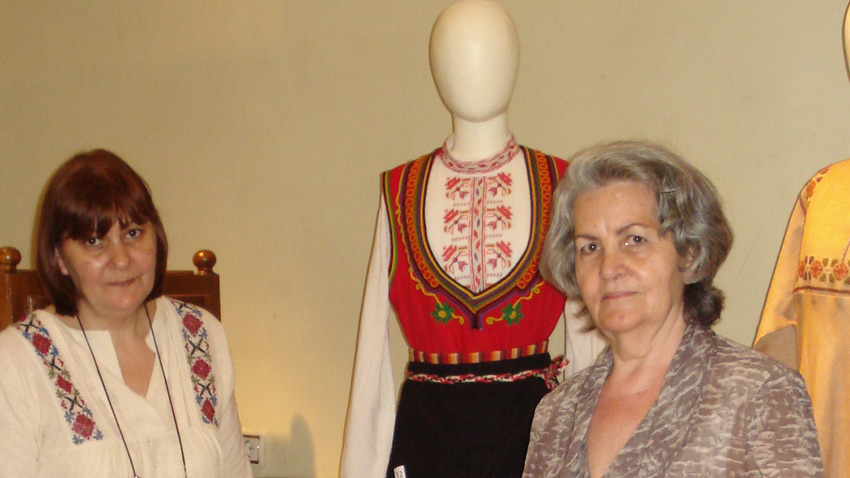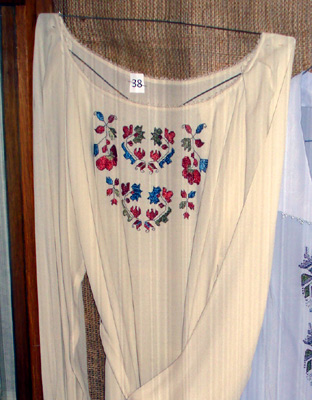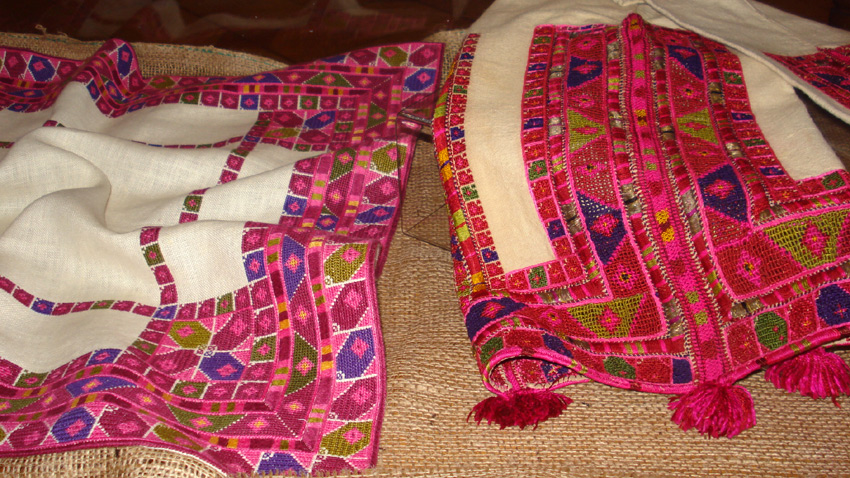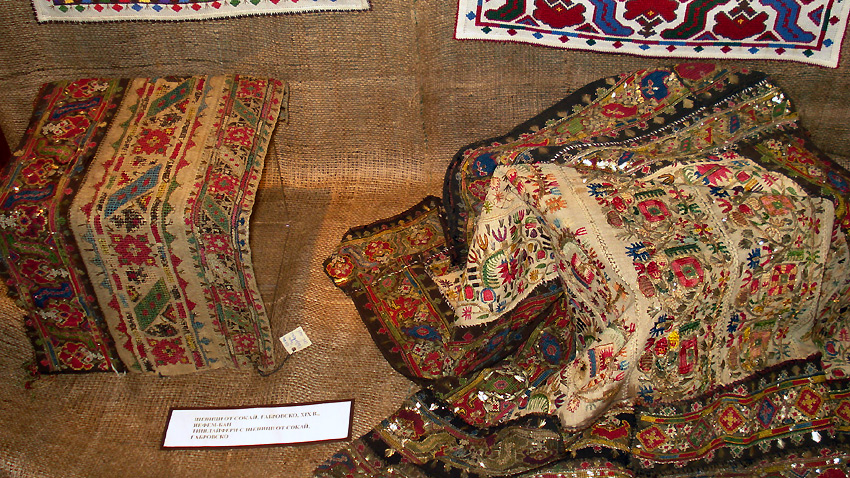 3
3
“In ethnographic and folklore studies, traditional Bulgarian ornamentation is essential if one wants to know everything there is to know about the Bulgarian people. To be able to really know traditional Bulgarian art we must probe deep into folklore ornaments and find out which elements Bulgarians created themselves and which they have borrowed from other nations,” writes in his book Traditional Bulgarian Embroidery renowned artist Stefan Badjov in 1913.
 This is a maxim Stoyka Popova and Zlatka Popova live by. The mother and daughter from Plovdiv have been endeavouring to popularize and preserve traditional Bulgarian embroideries in all of their authentic glory. The two have already mounted 30 exhibitions in Bulgaria and abroad. Works of theirs have been shown in Skopje, Tokyo, Moscow, Japan, Switzerland… And have invariably evoked genuine interest among visitors.
This is a maxim Stoyka Popova and Zlatka Popova live by. The mother and daughter from Plovdiv have been endeavouring to popularize and preserve traditional Bulgarian embroideries in all of their authentic glory. The two have already mounted 30 exhibitions in Bulgaria and abroad. Works of theirs have been shown in Skopje, Tokyo, Moscow, Japan, Switzerland… And have invariably evoked genuine interest among visitors.
An exposition of their works The Magic of Bulgarian Embroidery opened at the Bulgarian Academy of Sciences Institute for Ethnology and Folklore Studies with Ethnographic Museum on June 11 and will be on until the end of summer.
 “People have been asking us where we got the original, what the specific item is – whether it is part of a skirt, of a frock, of a bodice. And we have to explain,” says Stoyka Popova. “That is the reason why at this exhibition – perhaps the first of its kind – we have put on show the originals from the National Museum of Ethnography we used to copy the embroidery pieces from and we demonstrate how they were made, how they were used once upon a time and how they are used nowadays.”
“People have been asking us where we got the original, what the specific item is – whether it is part of a skirt, of a frock, of a bodice. And we have to explain,” says Stoyka Popova. “That is the reason why at this exhibition – perhaps the first of its kind – we have put on show the originals from the National Museum of Ethnography we used to copy the embroidery pieces from and we demonstrate how they were made, how they were used once upon a time and how they are used nowadays.”
The Bulgarian women of yore knew and used more than 100 different kinds of stitches but most of them are lost and forgotten; now there are no more than 10 kinds of embroidery. But Stoyka and Zlatka have been finding ancient pieces of embroidery and managing to bring many of them back to life. So, now their collections display more than 30 kinds of stitches! Coming across a hitherto unknown kind of stitch or embroidery technique is a real stroke of luck, so when that happens the two sit down to work right away. But when they are restoring ancient costumes or embroidery they often feel disappointed:
“I am really shocked when I see a master embroider or artist using ready-made embroidery patterns,” says Stoyka Popova. “How can any embroidery be ready-made? If you can use machine embroidery to make stage costumes for a music ensemble, for everything else it is absolute sham. What we make are unique pieces, as close to the original costume as possible. I am glad to say what people are looking for are genuine, authentic works. What we have been seeing is a tendency of having weddings in national costumes hired from ethnographic museums or in traditional costumes, made especially for the occasion. This is a good thing because it shows the young have an interest in tradition.”

“Red, brown, black, blue, green, yellow in all of their nuances,” Zlatka Popova says, enumerating the traditional colours of Bulgarian embroidery. “It has practically all colours in existence, depending on the region.”
Asked whether there are ornaments unique to traditional Bulgarian embroidery, she answers: “The tree of life, horses, leaning flowers, animal figures, rooster heads – all this is very typical, as is the kene – a special kind of needle laceused mostly for decorating the clothes themselves – the bodices, the sleeves, the skirts. Traditional Bulgarian embroidery is a wealth of ornaments and colours.”
And this is evident if one takes a look at the exhibits included in The Magic of Bulgarian Embroidery – they sparkle with the beauty of the exquisite doilies, shirts, kerchiefs, frocks, the “Macedonian” embroidery is in pink, the “Sofia” embroidery – in red, the lacework from Samokov and Elhovo are in all colours of the rainbow, as if untouched by human hand, coming from times long gone by.

In the words of Stefan Badjov, in their work Bulgarian women have woven in their entire inner world. “There is nothing more elegant in traditional art than these embroideries, wondrous in their technique, composition and colour. A veritable artist, Bulgarian woman captivates the natural shapes to put them down on fabric in her own inimitable style,” he says.

English: Milena Daynova
Photos: Dessislava Ivanova
The Philip Koutev National School of Folk Arts is not just any school - it is a talent laboratory. It is the first school not only in Bulgaria but in the Balkans for professional study of folklore. It is located in the heart of the beautiful town of..
Scientists from the Sorbonne will study the cultural heritage preserved in the Regional Ethnographic Open-Air Museum "Etar" , informs public broadcaster BNT. In March this year the French scientists together with experts of REOM "Etar" will study elements..
The day of St. Tryphon (1 February old style, 14 February new style) is celebrated by vine growers, falconers and gardeners in Bulgaria. Trifon Zarezan comes around with vine pruning and wine drinking St. Tryphon is believed to help..

+359 2 9336 661
